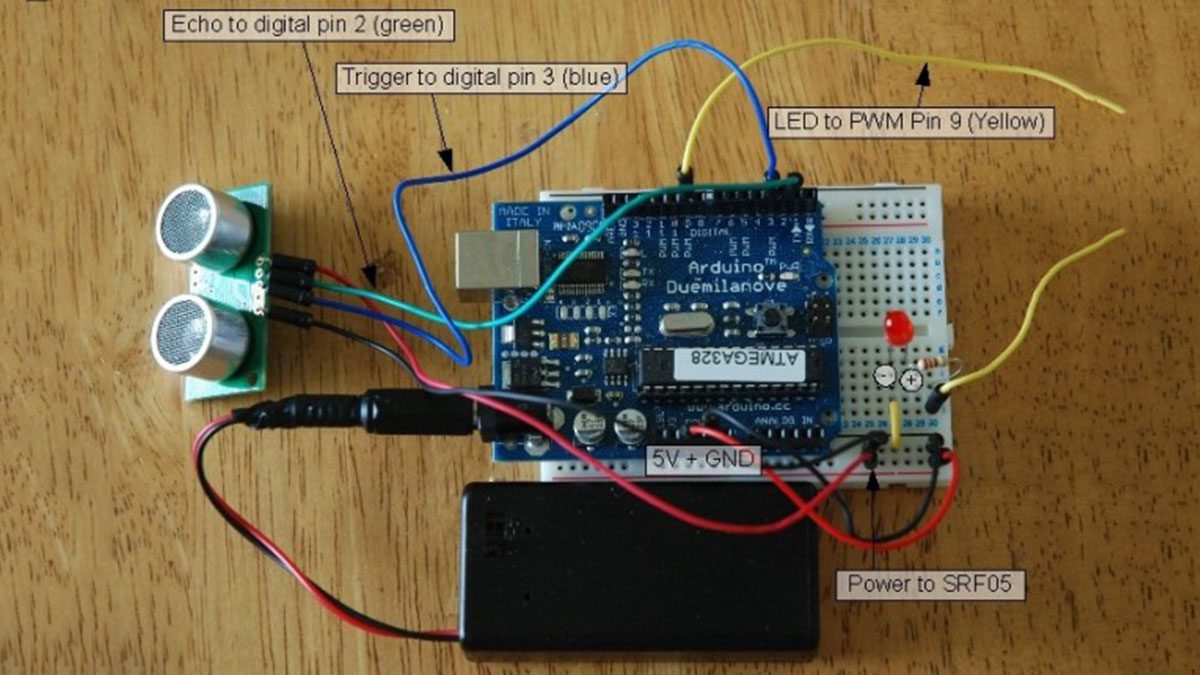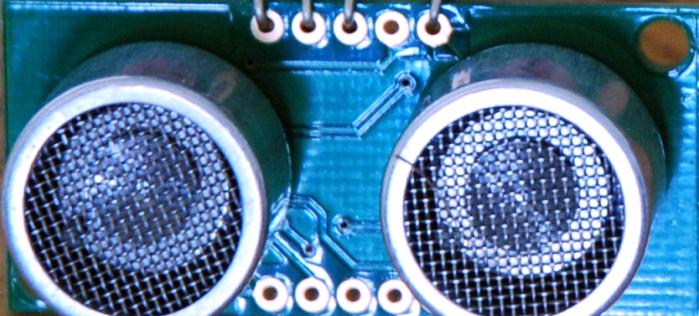A guide to using the SRF05 Distance Sensor with Arduino in order to calculate distances from objects. In this case I’m also altering the output of an LED with PWM according to how close an object is to the sensor. So the nearer you are the brighter the LED.
So if we start with the SRF05, it’s an IC that works by sending an ultrasound pulse at around 40Khz. It then waits and listens for the pulse to echo back, calculating the time taken in microseconds (1 microsecond = 1.0 × 10-6 seconds). You can trigger a pulse as fast as 20 times a second and it can determine objects up to 3 metres away and as near as 3cm. It needs a 5V power supply to run.
Adding the SRF05 to the Arduino is very easy, only 4 pins to worry about. Power, Ground, Trigger and Echo. Since it needs 5V and Arduino provides 5V I’m obviously going to use this to power it. Below is a diagram of my SRF05, showing the pins. There are 2 sets of 5 pins, 1 set you can use, the other is for programming the PIC chip so don’t touch them!
SRF05 Arduino Components
220 Ohm resistor (Red, Red, Brown, Gold)
SRF05 Ultrasonic range finder
LED
Arduino Deumilanove w/ ATMEGA328
Breadboard / Prototyping board
Jumper/ Connector wires
Optional 9V DC power supply or use the USB power for the Arduino
Arduino SRF05 Circuit
Very, very simple circuit, I’ve used the breadboard to share the GND connection and to add the LED which I could probably have done with out the breadboard. You’ll see the most complex thing is the code later on.
SRF05 Arduino Distance Sensor sketch
All the work is done here, I’ve added code that averages the distance readings to remove some of the jitter in the results as the SRF05 is calculating distances very rapidly and there can be a lot of fluctuation. Also I convert the time in microseconds to distance by dividing the time by 58.

Why 58? Well because if you take the time in microseconds for a pulse to be sent and received e.g. for 1 meter it takes about 5764 microseconds – at least from my wall anyway. If I divide this time by the distance in cm in I will get 57.64 so I just round this up – you can calculate distance in any other unit with this method.
For more detail: Arduino – Sonic range finder with SRF05

